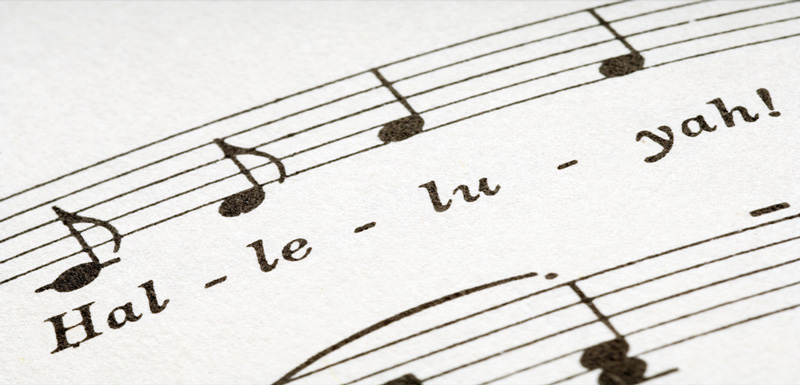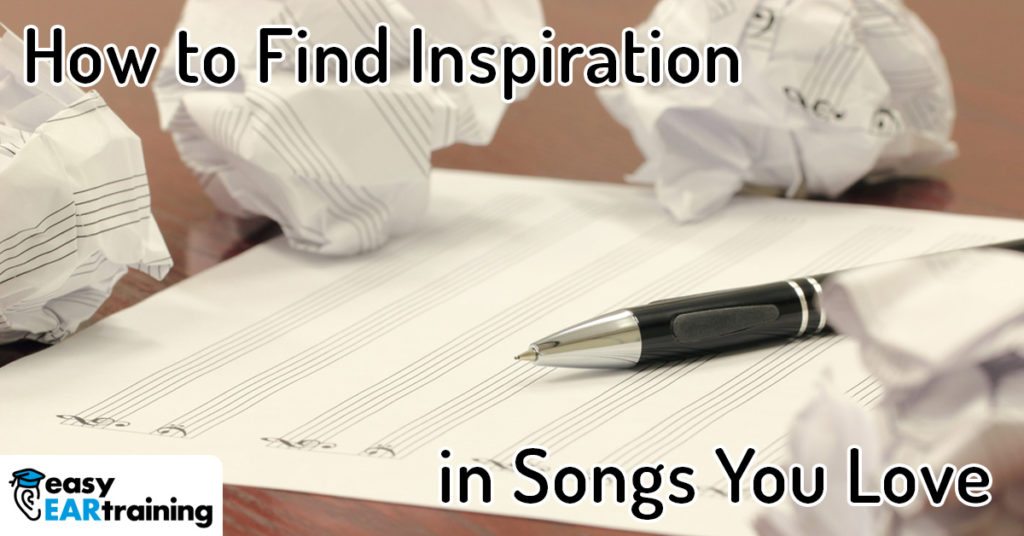Are you feeling completely out of inspiration or on a temporary creative block? Cases like these happen for all song writers and composers and you have to learn how to handle them. Luckily there are some techniques to save you, by using songs you love as a source of inspiration.
Some might call these techniques unfair, as there are stereotypes that every music track should be written completely from scratch. The truth is that this isn’t cheating at all, because you are creating completely original material in the end – and in reality every song has been inspired by the music the song-writer had heard before.

Finding your key and writing melodies
In music theory, the “key” provides the overall feeling of a song. For example, songs written in major keys usually sound happy and uplifting while minor keys tend to express sad and depressing feelings.
Based on that, if you want to recreate the overall feeling of your favorite track, a good place to start is to identify the key and then create your melodies in that particular key.
You can read this full article on identifying major and minor keys, but here’s a simple method: to identify the key of any track, you can look up the notes of minor and major scales and then try playing them along with the music track and see if they sound “in key” or not. Google what sharps and flats you have to play in different scales or study the circle of fifths.
Now play the track and play along random notes from particular scale. If all notes you play are in tune with the song, you have found the key. If not, repeat the song and play random notes from another scale. Repeat this until you’ve found the key!
Here are some examples so you can hear the difference. The first sample is out of key, as song is in E minor, but the notes played are in E major. The second sample is in key, as the song is in C major and notes played are in C major, as well.
Could you hear the difference? You can use this skill to identify the key of any song!
When you have identified the key, you know all the sharps and flats you should use, and the next step is to write your own melodies in that key. Use your improvisation skills to come up with new musical ideas for your melodies.
Creating chord progressions and bass lines
Chord progressions and bass lines are always the driving forces of any song as they move the composition harmonically. When composing these two will heavily affect your ability to create a good-sounding track.
Normally the bass line follows the chord progression and so you can listen in to the bass parts of your favourite tracks to figure out what progression they are using.
Bass parts are usually the elements in around 50-200 Hz. Depending on the genre you are looking for sub-bass, bass guitars, contrabass, tuba, etc. You can identify these elements by disabling all the frequencies above 200 Hz area using your EQ.
Here are two examples. Note: the second uses some very low frequencies! Be careful with your volume and use headphones to hear it clearly.
When you have identified the bass line, try to recreate it in your own way. For example if you hear bass guitar in the original song, you don’t have to recreate the exact line with the same instrument. This should be just the starting point for you, as you create your own unique bass lines and other harmonic elements on top of that.
Some bass lines are very simple and commonly used, but if the song you are using for inspiration has a complex and unique bass line, it would be not be recommended to use it directly! Create your own unique line inspired by it.
After determining your bass line you can start to put chords on top to create your chord progression. You will probably use the notes of the bass line in each bar to determine the chord, but depending on the bass line you may have a lot of flexibility. For example, your inspiration track might be using a simple bass line of root notes with major chords on top, but you choose to change some of those chords to minor or seventh chords.
The more changes you make the more unique your final track will be. It’s up to you whether to stay close to the original and keep its musical character, or branch out far in your own direction, just using the inspiration track as the seed for your own musical creativity.
Inspiration from the overall sound of a track
There might be cases when none of the approaches above seems to help. Perhaps you are just in love with the overall sound of particular track. Here are some techniques to get inspired from the overall sound.
Listen to the source track, practising active listening. Try to identify what creates the mood. This time you should focus not on the notes used but on atmospheric elements. Pay attention to the timbre: pads, ambiences, special effects, swooshes and other elements that give the track its special feeling.
Now try to recreate them. Depending on your genre you can use VST instruments, record live instruments or process sounds using analog or digital audio effects. Focus on the sound design, not the re-creation of melodic or harmonic elements.
Inspiration for song structure
So now maybe you are finished with your melodic and harmonic parts and have the overall sound dialled in, but you’re still struggling with creating proper arrangements to make your song progress. In this case listening to some inspiration tracks may help you again.
Listen to some of your favorite tracks and write down the song structure as it progresses through the tracks. Write down where the intro, chorus, verses are, how they follow each other and how they repeat.
Song structure isn’t just about the order of verse, chorus, etc. Maybe there are some unique instrument arrangements in the original tracks you are listening to? For example, drum beat playing along with pads, percussion solo at start, swooshes to make transitions smoother or inspirational quotes in breakdowns.
Listen for things which strike you as inspiring or musically compelling and then ask yourself how you could incorporate those ideas into your own track.
Don’t forget about lyrics
There might be cases when you feel empty for lyrical ideas. Let’s say, you have written a good instrumental track, but think it needs a vocal part and you aren’t sure what words are right. Luckily there are several techniques you can use to get inspired from other songs in this case as well.
To get started think up some of your favorite songs and search for their lyrics online. You can open them all up in different browser tabs at the same time, so you have an easy view over them all.
Write down the nouns, verbs and other words from all the tracks that inspire you. Then try to create sentences around the words you collected. In this way you should be able to come up with unique lyrics.

Keep in mind that it’s not recommended to use complete lines of lyrics from the original song! Even a single line can be distinctive and you should create all original material. Better to stay with the technique described above and simply draw inspiration from individual words and ideas.
Sampling and layering techniques
Sampling means re-using some existing musical material in your own composition. It may sound strange, but it is a pretty common technique nowadays.
Be careful! You have to be aware that you are using another artist’s work which might be copyrighted. So, to be safe, it is highly recommended to contact the original artist asking for permission to use particular element as a sample.
If you are getting inspired from some catchy guitar riff, lead melody or beat, try to cut it and build your own track around it. Here is an example of an instrumental riff from “Dear Mama” sampled in “Dreams Do Come True”:
Going further, modern analog and digital sound processing can turn any sample into completely original material. One of the most common techniques achieving this is layering, meaning different frequencies of different samples are blended together.
Find Your Inspiration
All song-writers get stuck from time to time, but we all have a secret weapon: our favorite songs. These play an important role in our lives, soundtracking our most memorable moments and helping us throughout hard times.
Whether you know it or not, your song-writing is already heavily influenced by the music you love. So why not take it a step further, and use those songs to help you when you most need inspiration?
Listening to other artists’ tracks can lead you to many unique ideas you can use in your own productions. Whether you are searching for melodic, harmonic, thematic or lyrical inspiration, there are always creative ways to use songs you love as a reference.
Remember that the number of songs out there is practically endless, yet there are only 12 chromatic notes in an octave… Songs may seem completely unique, but there will always be some features in common. Similarly lyrics all draw on the same dictionary of words, but used by different writers, they can still create unique feelings in us.
Everything in the world of music is already related by influence and inspiration, so next time you get stuck why not listen to some of your favorite tracks, draw inspiration from them, and create something even more beautiful of your own?







